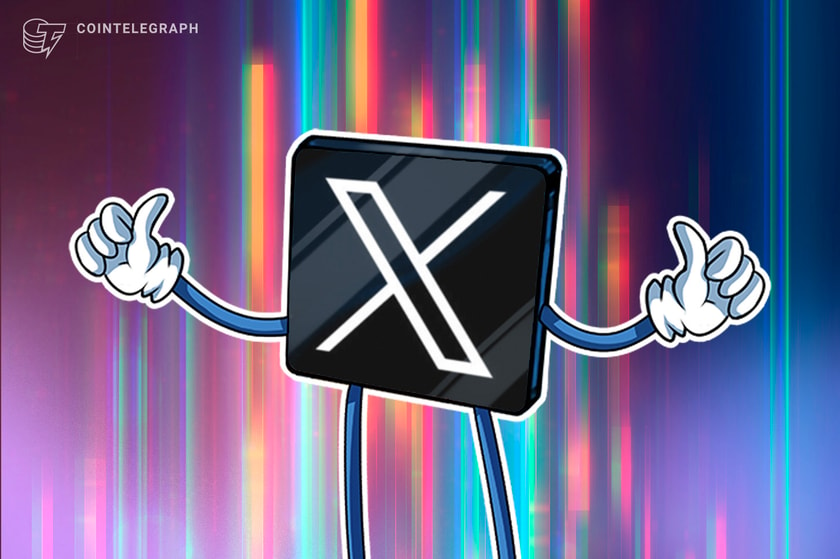How to earn passive income with peer-to-peer lending
Key takeaways
-
P2P crypto lending lets you earn interest by lending digital assets directly to borrowers via CeFi or DeFi platforms.
-
Smart contracts automate lending processes in DeFi, ensuring transparency, efficiency and algorithmic interest rates.
-
Choosing the right platform requires evaluating factors like security, interest rates, loan terms and user experience.
-
Risks include market volatility, platform failure and regulatory uncertainty.
Earning passive income through peer-to-peer (P2P) crypto lending has become an increasingly popular strategy for crypto holders seeking to get returns without actively trading. By lending digital assets on centralized or decentralized platforms, investors can earn interest while contributing to the liquidity of the crypto ecosystem. This comprehensive guide explores the mechanisms, platforms, risks and strategies associated with P2P crypto lending.
What is peer-to-peer (P2P) crypto lending?
Peer-to-peer crypto lending allows individuals to lend their cryptocurrencies directly to borrowers, bypassing traditional financial intermediaries. This process can happen on centralized platforms, which manage the lending process, or decentralized finance (DeFi) platforms, which utilize smart contracts to automate lending and borrowing activities.
Lenders earn interest on their crypto holdings, while borrowers gain access to funds without liquidating their assets. This system provides an alternative means of generating passive income and accessing liquidity within the crypto market.
At the heart of many decentralized lending systems are liquidity pools. These liquidity pools are smart contract-based reserves of digital assets contributed by lenders. Liquidity pools make lending scalable: Instead of matching individuals manually, borrowers can access funds directly from the pool, and interest rates adjust automatically depending on supply and demand dynamics.
For instance, if there’s high demand for borrowing Ether (ETH), the smart contract increases the interest rate to attract more lenders. If the demand wanes or liquidity surges, the rate drops. This algorithmic pricing creates a self-balancing system that ensures availability and incentives for all parties.
How does crypto P2P lending work?
Though it shares similarities with traditional lending, crypto P2P lending has several unique features:
-
Crypto-based loans: Loans are issued in cryptocurrencies like ETH, Bitcoin (BTC), USDC (USDC) or Solana (SOL) rather than fiat money. Borrowers often use these loans to access liquidity without selling their crypto holdings, as this may help them avoid triggering taxable events or losing potential upside. Other common reasons include leveraging assets for margin trading, participating in yield farming or covering short-term expenses while maintaining a long-term crypto position.
-
Smart contract enforcement: The entire process, from setting terms and holding collateral to calculating interest and repayments, is handled by smart contracts. These are programmatic contracts that automatically execute the agreement without any third-party oversight.
-
Collateralization: Borrowers typically provide crypto assets as collateral. This collateral is usually overcollateralized in crypto markets to protect the lender. For example, borrowing $500 might require locking in $1,000 worth of ETH, ensuring that lenders are safeguarded even in volatile markets.
-
No traditional credit checks: In DeFi lending, smart contracts don’t assess credit scores or identity documents, and crypto lending is far more accessible. However, this also means higher risk for lenders, especially when borrowers default or collateral plummets in value. However, CeFi platforms may still apply Know Your Customer (KYC) checks.
-
Direct wallet transfers: Once the loan is approved and the collateral is locked, the funds are sent straight to the borrower’s crypto wallet. Repayments and interest are similarly returned to the lending pool or directly to the lender, depending on the platform design.
Did you know? BTCJam, launched in 2012 by Brazilian entrepreneur Celso Pitta, was the world’s first peer-to-peer lending platform to utilize Bitcoin exclusively. BTCJam attracted significant investment, including a $1.2-million seed round from prominent venture capital firms such as Ribbit Capital and 500 Startups. Despite its early success, BTCJam ceased operations in 2017 due to regulatory challenges in various jurisdictions.
CeFi vs DeFi: Centralized and decentralized lending platforms
The crypto lending landscape is generally divided into two categories: centralized and decentralized. The two lending approaches differ, so let’s see how:
DeFi lending platforms
These are non-custodial, trustless systems built on blockchains. Governance is typically managed by a community or decentralized autonomous organization (DAO), and all operations are executed via transparent smart contracts.
-
Examples: Aave, Compound, Morpho
-
Pros: Permissionless access, high transparency, yield farming incentives and non-custodial control over funds.
-
Cons: It requires technical literacy, has no customer support, and has smart contract risks.
CeFi lending platforms
These are operated by private companies and tend to replicate the traditional user experience of fintech apps. They manage custody, handle compliance, and often offer fixed interest rates.
-
Examples: Binance Loans, Wirex, Crypto.com
-
Pros: Easier onboarding, customer support and often more beginner-friendly due to good UX, dashboards and customer support.
-
Cons: Requires trust in a central entity, subject to regulations and custody risks like freezes.
Factors to consider when choosing a crypto lending platform
Choosing the right P2P crypto lending platform is the first and most important step in earning passive income. With dozens of platforms out there, knowing what to look for can significantly reduce your risks and boost your potential returns.
Security measures
Security should always be your top priority. Look for platforms that implement robust security protocols like:
-
Cold storage for user funds
-
Smart contract audits on DeFi platforms
-
Insurance coverage against hacks or platform failures
-
Two-factor authentication (2FA) and withdrawal whitelisting on CeFi platforms.
Interest rates
Interest rates vary widely across platforms and assets. For instance:
-
Stablecoins like USDC or Dai (DAI) typically earn 2%-6% APR on most lending platforms as of 2024, down from the higher yields seen in the bull market of 2020-2021. Rates fluctuate depending on demand, protocol design and overall market liquidity. For example, Aave currently offers around 3.5% APR on USDC, while Compound shows rates closer to 2.4%.
-
Major cryptocurrencies like BTC or ETH often fetch 2%-6% APR and vary further depending on demand and market volatility.
DeFi platforms like Compound adjust rates dynamically based on market supply and demand, while CeFi platforms often set fixed or tiered rates. Compare platforms like YouHodler, Crypto.com and Aave to see where your assets can earn the most.
Loan terms
Platforms vary in terms of how flexible their lending arrangements are:
-
Open-term lending allows you to withdraw funds at any time.
-
Fixed-term lending locks up your crypto for a set period (e.g., one month, three months) in exchange for higher yields.
Some platforms may offer both options, catering to short-term and long-term lenders.
User experience
A seamless user experience can make or break your crypto lending journey. Look for:
-
Intuitive UI/UX
-
Transparent interest tracking via dashboard access
-
Easy KYC (for CeFi)
-
Active customer support.
While DeFi options like Compound or Aave offer more control, they require greater technical knowledge. Beginners might prefer the easier-to-navigate dashboards of CoinLoan or Crypto.com.
Risks and rewards of P2P crypto lending
P2P crypto lending offers a tempting route to passive income, but like any investment, it’s not without risk. Understanding the balance of reward and risk is essential before locking your assets into any protocol or platform. You can:
-
Earn passive income: You can generate yields simply by depositing idle crypto assets.
-
Compound growth: Reinvested interest can boost your long-term returns, especially on platforms that allow compounding.
-
Portfolio diversification: Lending adds a new income stream beyond hodling or trading.
For many users, especially in bear markets, lending stablecoins is a way to protect capital while still earning yield.
The risks also exist, so do your own research before lending:
-
Market volatility: A sudden drop in crypto prices could lead to loan liquidations or collateral shortfalls.
-
Platform risk: Centralized platforms may go bankrupt, and smart contract bugs could drain funds from DeFi protocols.
-
Regulatory changes: Some governments are cracking down on unlicensed lending platforms, especially those operating without KYC.
Did you know? In August 2024, Ethereum-based lending markets experienced liquidations totaling $436 million, with Aave accounting for 66% of this amount. The surge in liquidations was triggered by a 22% drop in ETH’s price, highlighting the volatility and risks inherent in DeFi lending.
Comparing crypto lending and staking
Both crypto lending and staking are popular ways to earn passive income, but they work very differently.
Maximizing passive income with crypto lending
If you’re serious about earning sustainable passive income through lending, here are some smart strategies to improve your crypto lending strategy:
-
Diversify across platforms and assets: Spreading your funds across multiple lending platforms can help reduce exposure to any single point of failure. Similarly, diversifying between stablecoins and more volatile assets helps balance yield potential with risk tolerance.
-
Mix short-term and long-term commitments: Short-term lending gives you more flexibility, while long-term lending can lock in higher interest rates. Combining both can help you stay agile while still earning attractive yields over time.
-
Monitor performance and market conditions: Lending returns are dynamic. Interest rates change, platform reputations evolve, and new competitors enter the space. Make it a habit to check performance metrics, read platform updates, and act when better opportunities arise.
-
Review platform safety regularly: No platform is risk-free. Revisit the safety features of each service you use. Check for audits, insurance or cold storage practices. Also, audit reports (if available) should be reviewed to assess platform solvency and user protection measures.
-
Stay informed on regulations: Regulatory pressure is rising in the crypto space. Platforms may freeze withdrawals or exit entire regions due to compliance demands. Keeping up with crypto news via reliable sources can help you adapt quickly and avoid getting caught off guard.
Lending conditions can change quickly; interest rates may fall; platforms may lose liquidity or even shut down unexpectedly. To stay ahead, create an exit plan: Know how and when you can withdraw your assets, set personal yield benchmarks, and keep backup options in case a platform freezes funds. Exiting at the right time is just as important as entering the market, especially in a fast-moving crypto environment.
This article does not contain investment advice or recommendations. Every investment and trading move involves risk, and readers should conduct their own research when making a decision.









